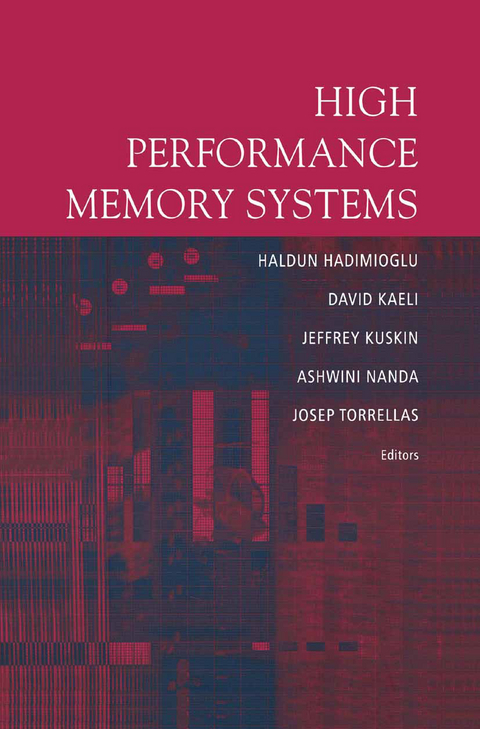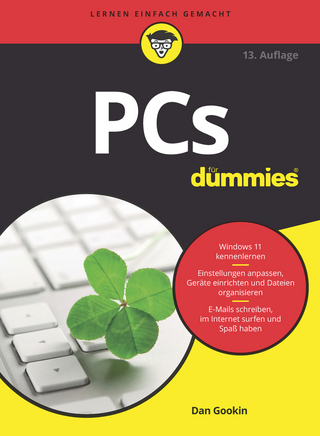
High Performance Memory Systems
Springer-Verlag New York Inc.
978-1-4612-6477-4 (ISBN)
The State of Memory Technology Over the past decade there has been rapid growth in the speed of micropro cessors. CPU speeds are approximately doubling every eighteen months, while main memory speed doubles about every ten years. The International Tech nology Roadmap for Semiconductors (ITRS) study suggests that memory will remain on its current growth path. The ITRS short-and long-term targets indicate continued scaling improvements at about the current rate by 2016. This translates to bit densities increasing at two times every two years until the introduction of 8 gigabit dynamic random access memory (DRAM) chips, after which densities will increase four times every five years. A similar growth pattern is forecast for other high-density chip areas and high-performance logic (e.g., microprocessors and application specific inte grated circuits (ASICs)). In the future, molecular devices, 64 gigabit DRAMs and 28 GHz clock signals are targeted. Although densities continue to grow, we still do not see significant advances that will improve memory speed. These trends have created a problem that has been labeled the Memory Wall or Memory Gap.
1 Introduction to High-Performance Memory Systems — scan all.- 1.1 Coherence, Synchronization, and Allocation.- 1.2 Power-Aware, Reliable, and Reconfigurable Memory.- 1.3 Software-Based Memory Tuning.- 1.4 Architecture-Based Memory Tuning.- 1.5 Workload Considerations.- I Coherence, Synchronization, and Allocation.- 2 Speculative Locks: Concurrent Execution of Critical Sections in Shared-Memory Multiprocessors.- 3 Dynamic Verification of Cache Coherence Protocols.- 4 Timestamp-Based Selective Cache Allocation.- II Power-Aware, Reliable, and Reconfigurable Memory.- 5 Power-Efficient Cache Coherence.- 6 Improving Power Efficiency with an Asymmetric Set-Associative Cache.- 7 Memory Issues in Hardware-Supported Software Safety.- 8 Reconfigurable Memory Module in the RAMP System for Stream Processing.- III Software-Based Memory Tuning.- 9 Performance of Memory Expansion Technology (MXT).- 10 Profile-Tuned Heap Access.- 11 Array Merging: A Technique for Improving Cache and TLB Behavior.- 12 Software Logging under Speculative Parallelization.- IV Architecture-Based Memory Tuning.- 13 An Analysis of Scalar Memory Accesses in Embedded and Multimedia Systems.- 14 Bandwidth-Based Prefetching for Constant-Stride Arrays.- 15 Performance Potential of Effective Address Prediction of Load Instructions.- V Workload Considerations.- 16 Evaluating Novel Memory System Alternatives for Speculative Multithreaded Computer Systems.- 17 Evaluation of Large L3 Caches Using TPC-H Trace Samples.- 18 Exploiting Intelligent Memory for Database Workloads.- Author Index.
| Zusatzinfo | XII, 297 p. |
|---|---|
| Verlagsort | New York, NY |
| Sprache | englisch |
| Maße | 155 x 235 mm |
| Themenwelt | Mathematik / Informatik ► Informatik ► Datenbanken |
| Mathematik / Informatik ► Informatik ► Netzwerke | |
| Mathematik / Informatik ► Informatik ► Theorie / Studium | |
| Informatik ► Weitere Themen ► Hardware | |
| Informatik ► Weitere Themen ► Smartphones / Tablets | |
| ISBN-10 | 1-4612-6477-4 / 1461264774 |
| ISBN-13 | 978-1-4612-6477-4 / 9781461264774 |
| Zustand | Neuware |
| Informationen gemäß Produktsicherheitsverordnung (GPSR) | |
| Haben Sie eine Frage zum Produkt? |
aus dem Bereich


